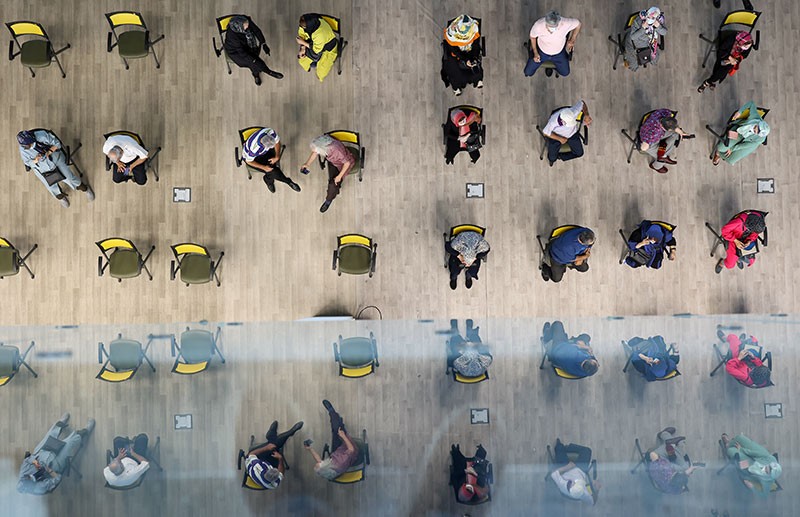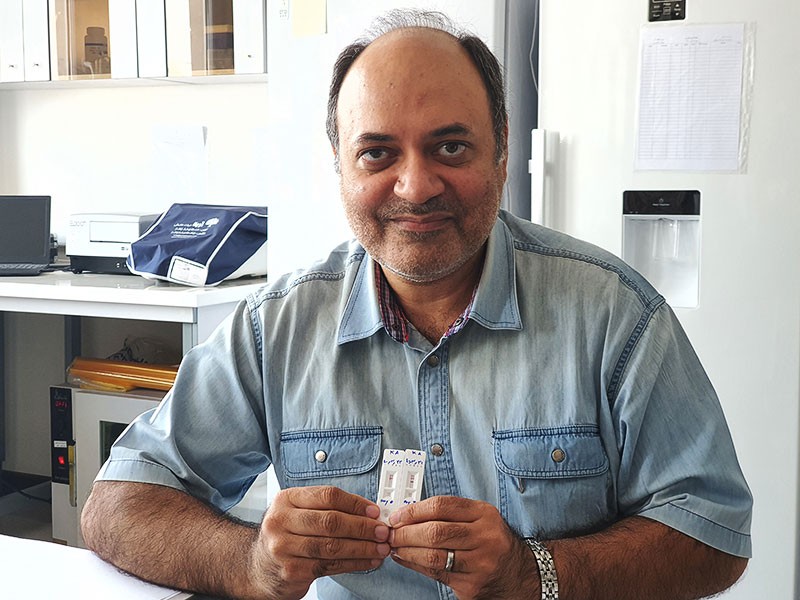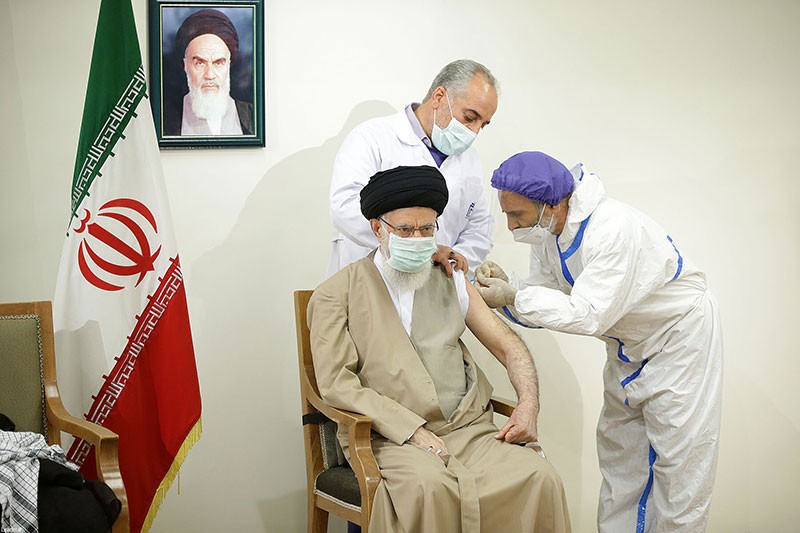[ad_1]
Iran was among the first countries to be affected by a COVID-19 outbreak in early 2020. He is currently battling his fifth wave, which is likely to be powered by the Delta variant. Official figures suggest that more than 4.3 million people have been infected and 97,000 have died since the pandemic began, but the real number may be much higher.
Scientists say Iran is one of the few Middle Eastern countries that has the ability to develop vaccines. It does this seriously: around ten are under development and one is already intensifying its vaccination campaign, but little is known about these vaccines outside of Iran.
nature speaks to Kayhan Azadmanesh, a doctor and biotechnologist who heads the virology research department at the Pasteur Institute of Iran in Tehran, about the country’s vaccine landscape. Azadmanesh is also advising the Iranian government and is developing two virus-vector vaccines through its spin-off company Humimmune Biotech.
How badly has the pandemic hit Iran?
As of January 2020 we have five separate waves. We currently have the highest number of new cases reported to date at around 40,000 per day, and the most common variant we discover is Delta. But many more cases are unlikely to be reported. The outbreak is putting hospitals under pressure and the situation is not looking good.
What COVID-19 vaccines are available in Iran?
About 18 million doses have been given to date: about 12 million of these were China’s Sinopharm vaccine; 4 million were the Oxford-AstraZeneca vaccine; and 1 million were COVIran Barekat, developed by the Iranian state-owned Shifa Pharmed Industrial Group in Tehran. The rest contains doses of Russia’s Sputnik V and India’s Covaxin. More than half a million doses are given daily, and around 17% of Iran’s 85 million population have received their first dose of a COVID-19 vaccine.
Can you tell us about COVIran Barekat?
It is an inactivated vaccine and is still in Phase III trials but received emergency approval in June. It was approved on the basis of the antibody levels it induces, including those that can “neutralize” SARS-CoV-2 or block entry into cells. In early studies, the researchers found that more than 93% of those vaccinated produced neutralizing antibodies. We don’t know how long this protection will last, but I expect it will be similar to other inactivated vaccines – like CoronaVac, made by the Chinese company Sinovac Life Sciences – which have been shown to have low levels of antibodies after six months1which suggests boosters are likely needed.
What other vaccines are being developed in Iran?
Pasteurcovac is a recombinant protein vaccine that was developed in collaboration between the Cuban Finlay Vaccine Institute in Havana and the Pasteur Institute of Iran. The vaccine is known as Soberana 02 in Cuba. It also received emergency approval in Iran in June, although it is still in Phase III trials. There are several other inactivated vaccines and recombinant protein vaccines in clinical trials, and there are at least one mRNA vaccine, two adenovirus vector vaccines, and one measles virus vector vaccine in earlier stages of development. Vaccines developed outside of Iran are also currently in clinical trials and are being manufactured locally.
Tell me about the vaccines you are developing?
My company, Humimmune Biotech, was working on two vaccine candidates. The measles virus is used as the backbone to introduce a gene that encodes either the SARS-CoV-2 spike protein, which the virus uses to enter cells, or the nucleocapsid protein, which it needs to replicate. This vaccine is made by the Iranian company BioSun Pharmed in Tehran.
The other vaccine that could be more promising uses an adenovirus 5 backbone to provide part of the sequence for the Spike protein – a backbone similar to the second dose of Sputnik V. We hope to have clinical early next year To begin studies. Most of the COVID-19 vaccines used in Iran so far have been inactivated vaccines, which I think will mean people will need a booster vaccination next year. Our vaccine could be used as a booster, and a mix-and-match approach could even provide better protection. The technology can also be easily modified against new variants – we have already started developing a version for Delta.
Why are Iranian scientists developing so many vaccines?
We have a long history of vaccine production in Iran. The Pasteur Institute of Iran was founded in 1920 and has manufactured vaccines against tuberculosis and rabies. Vaccines against measles, mumps and the human papillomavirus have also been developed in Iran.
We cannot rely on the help of the international community in the pandemic. We live under sanctions imposed by the United States; In our opinion, these are not justified. The United States says sanctions have no impact on humanitarian activity, but when you have limited money sending, it is difficult to buy medicines and medicines. And we have the technology to make vaccines, so why not use it? To keep Iranians safe, it makes sense to develop a variety of vaccines with different research and development strategies, as China has done.
Why are Iranian researchers reluctant to publish their work internationally?
This could be another side effect of the sanctions. Researchers in Iran may not want to pay too much attention to their work in case they jeopardize potential partnerships before they have an end product or risk losing access to raw materials and technology they need for vaccines.
The researchers are also very busy helping fight the pandemic in Iran. You may not have time to publish results in international journals. But some have started to share results. In June, the researchers who developed COVIran Barekat released a preprint of their preclinical results2and they will publish clinical results very soon. We also plan to publish the results of our adenovirus vector vaccine soon.
What were the biggest challenges in developing COVID-19 vaccines?
The sanctions have created many difficulties because they make it difficult for us to buy materials and equipment. For example, chromatography resins that we use to purify vaccines are mainly made by multinational companies that are major suppliers to the United States so they may be afraid to sell to us. The United States says we can request exemptions, but our experience has not worked. But somehow we find a way. We modify our methods, find other providers or look for local solutions. We look for the best we can get, but sometimes quality and efficiency are compromised.
Scaling is also one of the biggest challenges in the world. Prior to the pandemic, Iran had to primarily manufacture vaccines for children, with a production requirement for each vaccine of around 3 million doses per year. Now we need about 170 million doses to fully vaccinate the entire population.
What is the future for vaccine development in Iran?
COVIran Barekat’s original goal was to produce up to 30 million doses per month by September, which would have been enough to vaccinate the adult population. But they failed, so we had to import millions of doses of other vaccines. As many have said, this won’t be the last coronavirus pandemic we face. I expect that the vaccine production capacity will be used in the coming years to develop new vaccines and drugs for both coronavirus and other diseases.
[ad_2]



